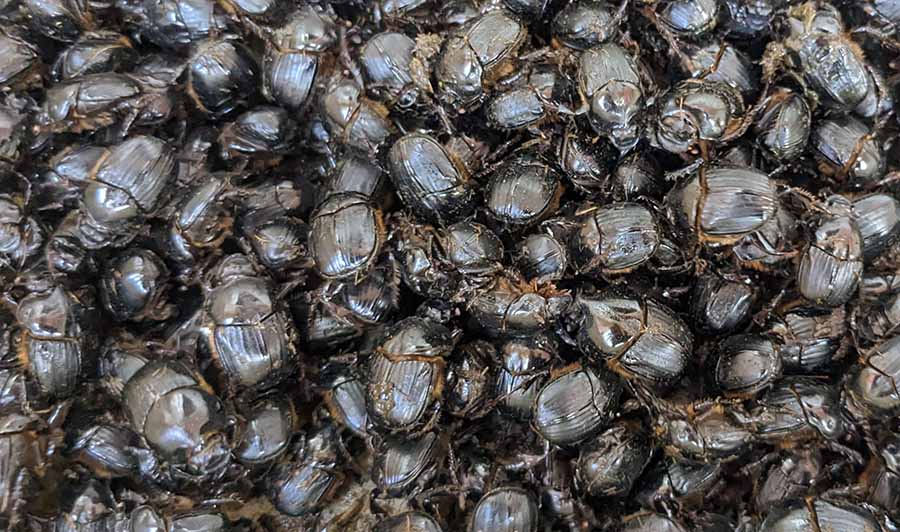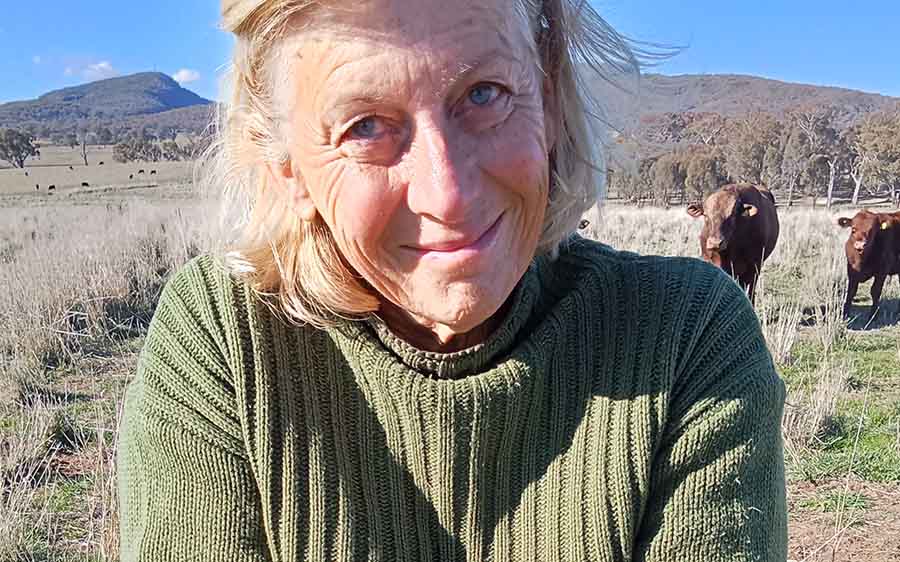In southern New South Wales, close to the Victorian border, graziers Jill and Ian Coghlan graze around 250 head of red poll cattle in the foothills of the Yambla range, beneath Table Top Mountain.
They've run stud cattle on their property Eurimbla for over 40 years, with a strong focus on sustainable practices, including regenerative farming.
It was through a chance meeting with Dr Russ Barrow, who was the leading researcher on the Meat and Livestock Australia-funded Dung Beetle Ecosystem Engineers project, that the couple were introduced to an otherwise unseen world beneath their feet.
 Bubas Bison species of dung beetle
Bubas Bison species of dung beetle
Together, they went to find out what kind of beetles were already present on the property and discovered a strong population of the introduced Bubas bison species, a shiny black species that emerges from the soil in late autumn and is highly valued for its ability to operate throughout the winter months. It's one of Australia's only dung beetles available that is active over winter.
While dung beetles had never been a high-priority focus for Jill, she was keen to learn more about the potential benefits the beetles could have for their overall environmental health and productivity.
What Jill and Ian quickly learnt, through regular beetle checks, was that while they had some Bubas bison beetles, they didn't have a diversity of species that would lead to stable dung processing all year around.
'It was a learning process for me, with regard to then understanding that different dung beetles operated at different times of the year,' Jill said.
'We realised there were periods of the year that we lacked the numbers of dung beetles.'
She said there was a visible difference that they hadn't considered before during the times of year the dung beetles weren't as active on their land.
'That was the noticeable thing, that the dung wasn't being 'emptied out'. They just leave a dry shell [when they're active], and that wasn't happening as much when there weren't as many dung beetles.'
Having heard the benefits to having a diverse population of dung beetles, Jill was keen to introduce new species of dung beetles to fill the gaps throughout the year and see the results they might have for soil and livestock health.




